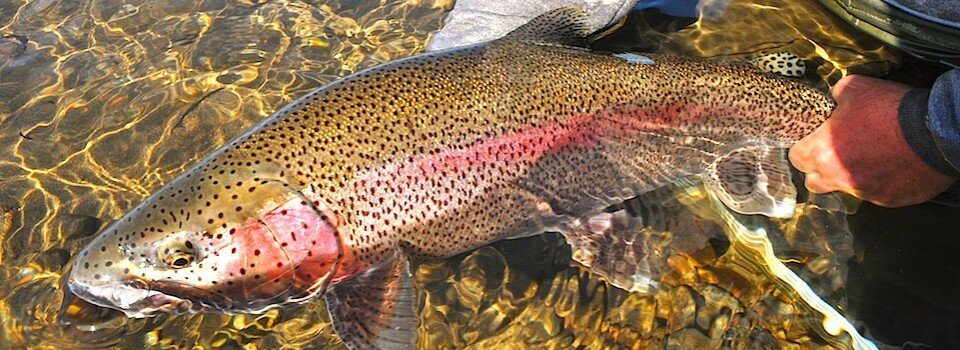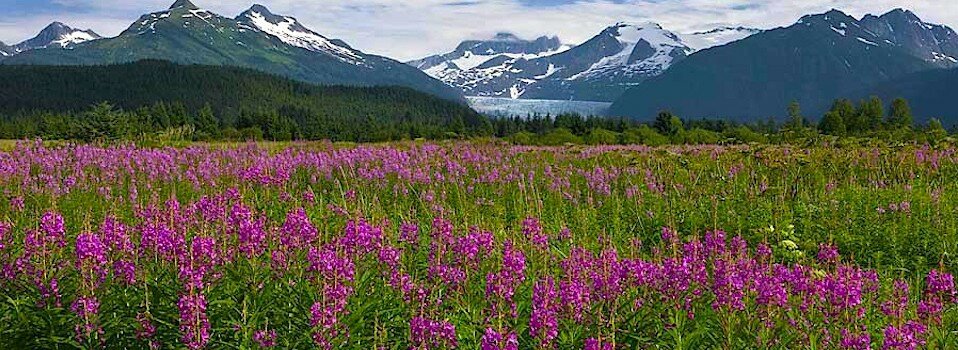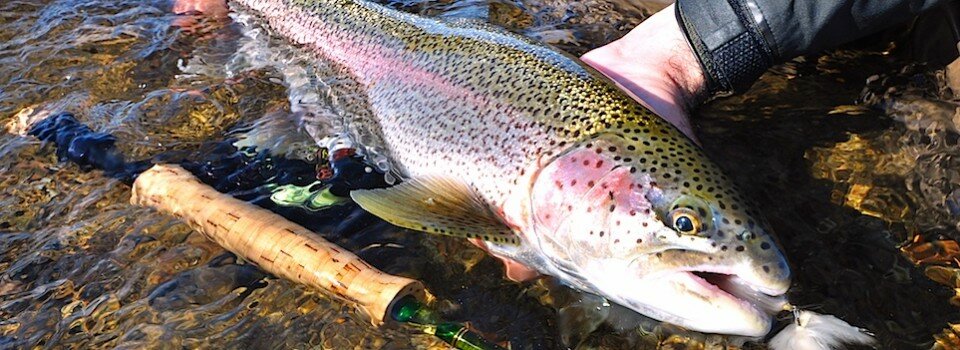Arctic Grayling (Thymallus Arcticus )
We offer the angler unlimited access to trophy Grayling while fly fishing, with its sail-like dorsal fin dotted with large iridescent red or purple spots, the grayling is one of the most unusual and beautiful fish of Alaska. June is the month for the best dry fly fishing. This is because there are no eggs to distract the graylings top water feeding habits although July through August they are taken regularly on egg patterns and dry flies.
Grayling are generally dark on the back and have iridescent gray sides. They have varying numbers of black spots scattered along both sides. The fins are dusky brown and the pelvic fins are often marked with pink to orange stripes. About one month after spring breakup, adult grayling begin their post-spawning migration to summer feeding areas. Depending on where they have spawned, the distance traveled can be up to 100 miles. By the middle of summer, grayling will segregate within a stream according to age and maturity. The older adults will be found in the upper reaches of river and stream systems, the sub-adults in the middle, and the juveniles in the lower ends. Grayling fry hatch about three weeks after spawning, and they tend to occupy the quieter waters near where they were spawned.
Grayling are simple in their feeding habits, drifting aquatic insects, mayflies, stone flies, and caddis flies are their primary food items. At times grayling will gorge upon the eggs of spawning salmon. At times grayling will eat almost anything the fly fisherman’s dream fish. Grayling are especially popular because of their willingness to rise to a dry fly. Flyfishing techniques for grayling are similar to those used for any trout species. Grayling are often easy to catch, dry flies used are “Adams” Stimulators” Humpies” and hare’s ear nymphs”. However, when feeding on a specific insect, grayling can be very finicky and the fisher challenged to “match the hatch”. Larger-size fish are generally caught in less heavily fished areas like the Alagnak River. The state record grayling, 23 inches long and weighing 4 pounds 13 ounces, was caught in Bristol bay Alaska
Arctic Char (Salvelinus Alpinus) and Dolly Varden (Salvelinus Malma)
The entire season we catch Char & Dollies but by far the hottest action for these egg gobbling machines is August as they follow the Salmon into the rivers to spawn. The Char mainly are caught with bright colored egg sucking leaches and glow bugs or 10mm beads. Our average Char is 16-22 inches with a few 4-6lb fish are taken each summer from the Char hole. Anglers can expect incidental catches of Char and Dollies all season long but the best fishing is Mid August.
There are some external characteristics which can be used to differentiate between Arctic char and Dolly Varden. Arctic char generally have a shorter head and snout, a trait particularly evident in spawning males. The tail of an Arctic char has a slightly deeper fork than that of a Dolly Varden, and the base of the Arctic char’s tail is narrower.
Arctic char have light colored spots on a dark background. They are variable in color depending on environmental conditions within their lake of residence and time of year. The back is dark with a brownish or olive cast. The sides are lighter, fading to a pale belly. The overall color may be brown, yellow, gold, orange, or red. As the char approaches spawning, the spots, belly, and fins take on a bright orange, red, or gold cast, and the lower fins have brilliant white leading edges. The entire body may become golden or orange. Spawning colors are more exaggerated in males than in females.



